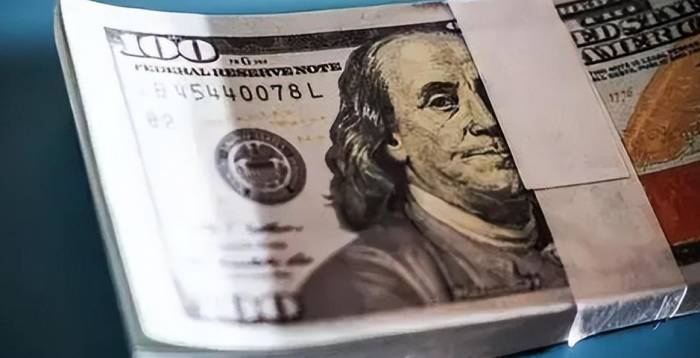Categories
News
Date
2024-09-22
$25B Gold Purchase! Aggressive Balance Sheet Reduction
01 Optimistic Data
Economic data from the United States indicates that the country seems to be far from a recession. The latest data released last week showed that the CPI only increased by 6.5%, which is the lowest CPI in nearly a year. After exceeding 7% in January of last year, it surpassed 8% in March of the same year, and even broke through 9% in the middle of last year, then it kept falling back, and finally dropped below the 7% threshold in December of last year.
Moreover, the CPI on a month-over-month basis also showed a negative growth for the first time in nearly three years. These data suggest that inflation in the United States has peaked and is falling back.
At the same time, the U.S. economy is still performing quite well, with the GDP for the third quarter, after revision, growing by 3.2%.
Last week, the United States announced the latest employment data, which far exceeded expectations, and the unemployment rate was surprisingly low at 3.5%.
Without a significant increase in the unemployment rate, inflation in the United States has actually come down. As a result, investor sentiment has generally turned optimistic, and everyone believes that the Federal Reserve will only raise interest rates by 25 basis points at the beginning of February this year, and may then stop raising interest rates in the middle of the year.
Advertisement
02 Full Force Balance Sheet Reduction
However, what might have been overlooked is that the Federal Reserve's monetary tightening policy has not changed as a result.
The magnitude of interest rate hikes is indeed decreasing, with a 75 basis point increase in November, a 50 basis point increase in December, and the next increase expected to be 25 basis points. This is very clear and visible to all.However, the simultaneous balance sheet reduction by the Federal Reserve has been overlooked by many.
The Federal Reserve's balance sheet reduction began in June of last year, and according to the plan, the amount of reduction would double by September.
But after the Federal Reserve started to reduce its balance sheet, everyone breathed a sigh of relief, as the actual scale of the reduction was much smaller than planned, even just half of it.
In September, the plan was to double the reduction from $47.5 billion to $95 billion, but the actual reduction still did not reach half of the plan.
However, by November, the actual amount of balance sheet reduction by the Federal Reserve had exceeded $80 billion, getting closer to the original plan of $95 billion. Yet, everyone's attention was drawn to the Federal Reserve's interest rate hikes, neglecting the more severe fact of balance sheet reduction.
03. The Federal Reserve's Sale of U.S. Treasury Bonds
In the past few years, the Federal Reserve's balance sheet has been expanding at an astonishing rate. Starting from the end of 2021, the Federal Reserve gradually reduced its monthly bond purchases of 1.2 trillion yuan, but this was merely a slowdown in the expansion of the balance sheet.
When the Federal Reserve began to reduce its balance sheet, the situation developed in the opposite direction, which means the Federal Reserve started to sell the U.S. Treasury bonds it held.
In fact, the institution that holds the most U.S. Treasury bonds without a doubt is the Federal Reserve. It is precisely because the Federal Reserve continuously prints money to buy U.S. Treasury bonds that the U.S. Treasury can continue to issue more bonds.
Now, with the Federal Reserve starting to sell U.S. Treasury bonds, it is undoubtedly like dropping a depth charge in the U.S. Treasury bond market, or the financial nuclear bomb that everyone has been worried about is now detonated.Who will buy US Treasuries in the future? Can ordinary investors alone bear the massive sell-off of US Treasuries?

04, 250 billion yuan in gold
Undoubtedly, the risks of US Treasuries are increasing. There is a possibility of breaching the limit and defaulting, and a greater possibility is the continuous issuance of new US Treasuries, robbing Peter to pay Paul, causing actual losses to holders.
It is precisely because of the early expectation of this that China is continuously reducing its holdings of US Treasuries.
On the other hand, the value of gold as a traditional reserve currency is increasingly valued by central banks around the world. China has been a pioneer in this regard, buying a large amount from the global market.
In the past two months, the central bank has continuously announced the increase in China's gold reserves. According to the average international gold price during this period, China has spent 250 billion yuan on gold purchases in the past two months.
In addition to the increase in gold reserves, China has also been continuously importing gold through various channels. According to the import volume in the first 10 months of last year, it is estimated that China's total gold imports in 2022 exceeded 1,000 tons.